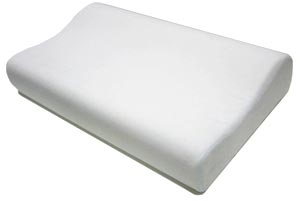Clavicle Fracture
Updated:
(Also known as Clavicle Fracture, Broken Collar Bone, Broken Clavicle, Fractured Clavicle, Fractured Collar Bone, Collar Bone Fracture)
What is a clavicle fracture?
A clavicle fracture (or broken clavicle) is one of the most common fractures seen in sport and is characterized by a break in the collar bone (clavicle) of the shoulder (figure 1).
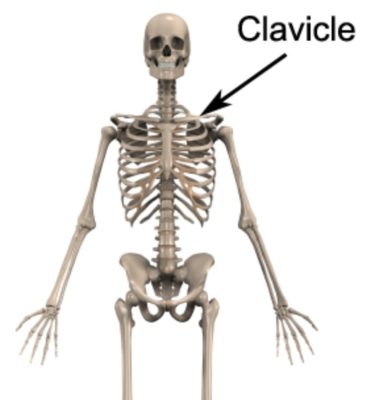
The clavicle is responsible for connecting the shoulder to the body and joins with the breast bone (sternum) at the front of the chest to form the sterno-clavicular joint and the bony process of the shoulder blade at the point of the shoulder (acromion), to form the acromio-clavicular joint (figure 1).
Following a fall onto the shoulder or outstretched arm, or, due to a direct impact to the point of the shoulder (or clavicular region), stress is placed on the clavicle. If these forces are beyond what the clavicle can withstand, a break in the bone may occur. When this occurs the condition is known as a clavicle fracture and can vary from a small undisplaced fracture to a severely displaced (and/or comminuted i.e. fragmented) fracture with obvious deformity.
Clavicle fractures usually occur in the middle third of the bone. When displaced the outer aspect of the bone (near the shoulder) usually displaces below the inner aspect of the bone (near the breast bone).
Causes of a clavicle fracture
A clavicle fracture usually occurs either following a fall onto the point of the shoulder (e.g. in horse riding, a tackle in football, or cycling, or a fall onto a hard surface in the elderly), or, due to a direct impact (such as a motor vehicle accident) or collision with another player during contact sports such as rugby or football (e.g. a ‘hip & shoulder’ bump). A clavicle fracture may also occur following a fall onto an elbow or outstretched arm. In these instances, forces are transmitted through the shoulder to the clavicle and if the forces are severe enough, may cause the clavicle to break. In very rare cases, other less common conditions such as metastatic bone disease or osteoporosis (that weaken the bone) may be present increasing the likelihood of the condition occurring.
Signs and symptoms of a clavicle fracture
Patients with a clavicle fracture typically experience a sudden onset of sharp, intense pain at the time of injury that may cause an inability to move the shoulder and arm. Pain is usually located somewhere between the base of the neck and the point of the shoulder.
Pain may increase when attempting to perform movements of the upper limb such as arm elevation, overhead activities, taking the arm across the chest, leaning on the affected arm or during pushing, pulling, carrying or lifting activities. Pain may also increase when lying on the affect side, applying pressure to the shoulder, or on firmly touching the clavicle at the site of injury. An ache in the clavicle may also be present that is particularly prominent at night or first thing in the morning (especially during the first few days following injury). Occasionally pins and needles or numbness may also be experienced in the shoulder, upper arm, forearm, hand or fingers.
Patients with this condition may notice an audible sound at the time of injury such as a ‘click’, ‘pop’ or ‘snap’. A grinding sensation may also be present during movement of the arm and shoulder (due to bony ends rubbing against each other). There is usually localized swelling at the site of injury, and, depending on the severity, a bony deformity may be evident (often with the shoulder sagging down and forwards). After a day or two following injury, extensive bruising may be evident in the clavicular area that may track down into other tissue.
Diagnosis of a clavicle fracture
A thorough subjective and objective examination from a physiotherapist is important to assist with diagnosis of a clavicle fracture. An X-ray is typically required to confirm diagnosis and should be taken if a fracture is suspected clinically. Further investigations such as a CT scan or MRI might be indicated, in some cases, to confirm diagnosis and determine involvement of other structures.
Treatment for a clavicle fracture

Members Only ContentBecome a PhysioAdvisor Member to gain full access to this exclusive content. For more details see Become a Member. Already a member? Login Now
Prognosis of a clavicle fracture
Most patients with a clavicle fracture usually make a full recovery with appropriate management (whether surgical or conservative). Return to activity or sport can usually take place in a number of weeks to months (depending on the forces involved in the activity and the injury severity) and should be guided by the treating physiotherapist and specialist. A longer period of recovery (usually lasting a minimum of 3 – 5 months as guided by the orthopaedic specialist) must be taken when returning to contact sports
In general, union (the initial healing) of a clavicle fracture (i.e. whereby soft tissue called callus bridges the fracture giving it initial stability) typically occurs in approximately 6 – 8 weeks (in adults) and 3 – 6 weeks (in children). Following union, the callus is gradually replaced with bone, with the majority of fracture strength achieved by 8 – 12 months and full fracture strength achieved around 1 – 2 years following injury. In patients with severe injuries involving damage to other bones, soft tissue, nerves or blood vessels, recovery time may be significantly prolonged with long term prognosis significantly affected (particularly in the elderly). A visible lump in the clavicle may remain (following completion of fracture healing), however this is merely a cosmetic issue and usually does not cause any other complications.
Physiotherapy for a clavicle fracture

Members Only ContentBecome a PhysioAdvisor Member to gain full access to this exclusive content. For more details see Become a Member. Already a member? Login Now
Other intervention for a clavicle fracture
Despite appropriate management, some patients with a clavicle fracture do not improve adequately and may require other intervention to ensure an optimal outcome. The treating physiotherapist or doctor can advise on the best course of management when this is the case. This may include further investigations such as X-rays, CT scan, MRI or bone scan or referral to appropriate medical authorities who can advise on any intervention that may be appropriate to improve the condition. In rare cases, patients with fractures that are initially managed without surgical intervention may require surgery to stabilize the fracture and ensure an optimal outcome. This may involve reduction (i.e. realignment of the fracture), fixation (using plates, screws or wires) and sometimes a bone graft (to aid fracture healing).
Exercises for a clavicle fracture
The following exercises are commonly prescribed to patients with a clavicle fracture following confirmation that pain free mobilisation can commence as guided by the orthopaedic specialist, doctor or physiotherapist. You should discuss the suitability of these exercises with your physiotherapist prior to beginning them. Generally, they should be performed 3 times daily and only provided they do not cause or increase symptoms.
Your physiotherapist can advise when it is appropriate to begin the initial exercises and eventually progress to the intermediate, advanced and other exercises. As a general rule, addition of exercises or progression to more advanced exercises should take place only provided there is no increase in symptoms.
Initial Exercises
In many cases, these initial exercises may begin within 1 – 2 weeks following injury as guided by the treating physiotherapist and provided there is no increase in pain due to the exercises. Exercises involving uninvolved joints below the fracture level such as the elbow, wrist and hand, can usually commence within the first 1 – 2 days following injury as guided by the treating physiotherapist.
Hand Open and Close
Curl your fingers and thumb making a tight fist then straighten your fingers as far as possible provided the exercise is pain free (figure 2). Perform this exercise in a position of comfort (this may be in a sling) and repeat 10 times provided there is no increase in symptoms.
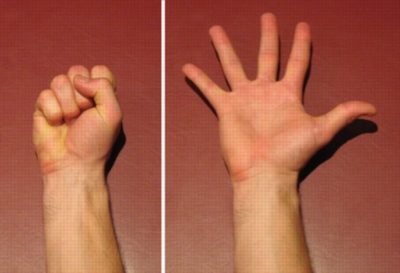
Wrist Flexion to Extension
Begin this exercise in a position of comfort (this may be in a sling) or sometimes with your forearm supported by a table, bench, your opposite hand or pillow etc. Bend your wrist forwards and backwards as far as you can go without pain and provided you feel no more than a mild to moderate stretch (figure 3). Repeat 10 times provided there is no increase in symptoms
.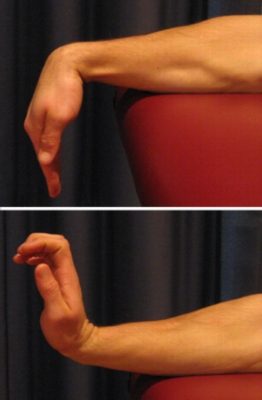
Figure 3 – Wrist Flexion to Extension (right side)
Elbow Bend to Straighten
Begin this exercise in a position of comfort (usually beginning with your forearm and palm on your chest). Slowly, bend and straighten your elbow as far as you can go (aiming to slide your palm down your body towards the front of your thigh and then back to your chest) provided there is no increase in symptoms (figure 4). Repeat 10 times provided the exercise is pain free.
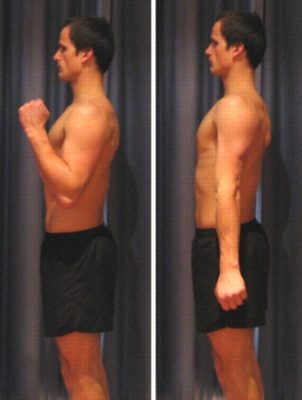
More Initial Exercises

Members Only ContentBecome a PhysioAdvisor Member to gain full access to this exclusive content. For more details see Become a Member. Already a member? Login Now
Intermediate Exercises

Members Only ContentBecome a PhysioAdvisor Member to gain full access to this exclusive content. For more details see Become a Member. Already a member? Login Now
Advanced Exercises

Members Only ContentBecome a PhysioAdvisor Member to gain full access to this exclusive content. For more details see Become a Member. Already a member? Login Now
Other Exercises

Members Only ContentBecome a PhysioAdvisor Member to gain full access to this exclusive content. For more details see Become a Member. Already a member? Login Now
Rehabilitation Protocol for a Clavicle Fracture

Members Only ContentBecome a PhysioAdvisor Member to gain full access to this exclusive content. For more details see Become a Member. Already a member? Login Now
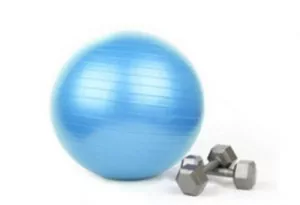 Physiotherapy products for a clavicle fracture
Physiotherapy products for a clavicle fracture
Some of the most commonly recommended products by physiotherapists to hasten healing and speed recovery in patients with a clavicle fracture include:
To purchase physiotherapy products for a clavicle fracture click on one of the above links or visit the PhysioAdvisor Shop.
 Find a Physio for a clavicle fracture
Find a Physio for a clavicle fracture
Find a physiotherapist in your local area who can treat a clavicle fracture.
 More Exercises
More Exercises
- Shoulder Stretches.
- Shoulder Strengthening Exercises.
- Scapular Stability Exercises.
- Rotator Cuff Strengthening Exercises.
- Elbow Stretches.
- Elbow Strengthening Exercises.
- Neck Stretches.
- Postural Exercises.
- Arm Strengthening Exercises.
- Upper Body Machine Weights.
- Cable Exercises (Back & Biceps)
- Cable Exercises (Chest, Shoulders & Triceps).
- Free Weights (Back & Biceps).
- Free Weights (Chest, Shoulders & Triceps).
- Cardiovascular Exercise.
 Recommended Reading
Recommended Reading
- Postural Taping.
- Shoulder Taping.
- Posture.
- Ice or Heat.
- The R.I.C.E. Regime.
- Injury Prevention.
- Investigations
- Understanding Pain
- Returning to Sport.
- Shoulder Diagnosis Guide.
Become a PhysioAdvisor Member

Link to this Page
If you would like to link to this article on your website, simply copy the code below and add it to your page:
<a href="https://physioadvisor.com.au/injuries/shoulder/clavicle-fracture”>Clavicle Fracture – PhysioAdvisor.com</a><br/>A clavicle fracture (or broken clavicle) is characterised by a break in the collar bone of the shoulder. Explore its symptoms, diagnosis & treatment now.
Return to the top of Clavicle Fracture.








